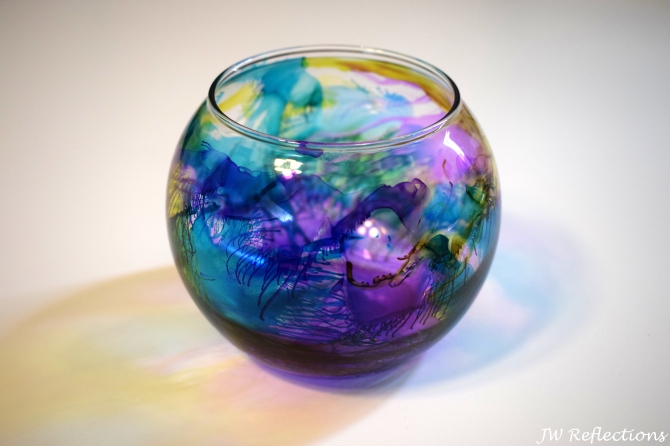I ran across a new medium this week called Alcohol Inks. I was a little nervous to try them because there is a little less control involved. Lots of “happy accidents”. A few supplies were needed, all of which you can purchase at Hobby Lobby or on Amazon. I’m sure you can probably get them at Michaels or JoAnn’s too. You would either need to purchase various colors of the alcohol ink or you can make your own. I found tons of tutorials online on how to make your own. I’m not a fan of “working to play” so I bought the inks already made. If I get into a little more, I may try to make my own so I can get more color variety or specific shades.
The Alcohol Inks that I used are made by Tim Holtz. Here’s a link to some of the color’s found on Amazon. I tried a few different ways on a gloss paper finish. For my experiments I used blank photo paper. I wasn’t happy with how they turned out so I’ll need to do a bit more playing around with them before I post pictures.
I focused instead on creating a stained-glass look on a couple different vases as well as some Christmas ornaments. To do this I dripped a few drops of ink into the vase/ornament and used canned air to blow the ink. This is where the lack of control comes in that I mentioned earlier. One of the things I liked the most was how fast it dried – only took a couple of minutes.



The ornaments were a lot of fun and I plan on making more of them as soon as I get another can of air. These are currently available on my Etsy site. Still debating if I will be posting the vases.





I love processes that are about ‘happy accidents’, probably why I love handpainting yarn so much. Your glass results look stunning, I particularly like the colours in the round vase and the baubles.
LikeLiked by 1 person
Thank you! You should give it a try. It is a pretty quick project if you get bored with long projects. I had never heard of handpainting yarn, so I immediately had to google it. That looks like it’s right up my alley. Does it get pretty messy? How do you set the colors?
LikeLiked by 1 person
I definitely will be! Handpainting yarn is just really directly applying the dye to the fibre with syringes or brushes, so you can create a more ‘random’ effect than you would with immersing the fibre in a dye bath to get a solid colour. How you set the colours depends on the kind of dye you are using (some need heat, some just take time). It’s not usually too messy but my kitchen might testify otherwise! Depends how much dye you accidentally splash about. I usually cover most surfaces in clingfilm with newspaper on top so it’s easy to clean after.
LikeLike
Let me know if you fancy having a go but have any questions.
LikeLike